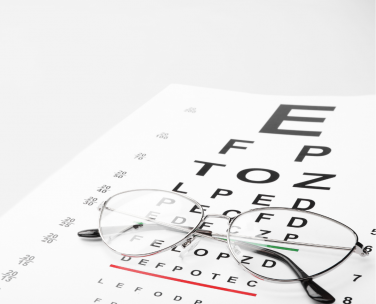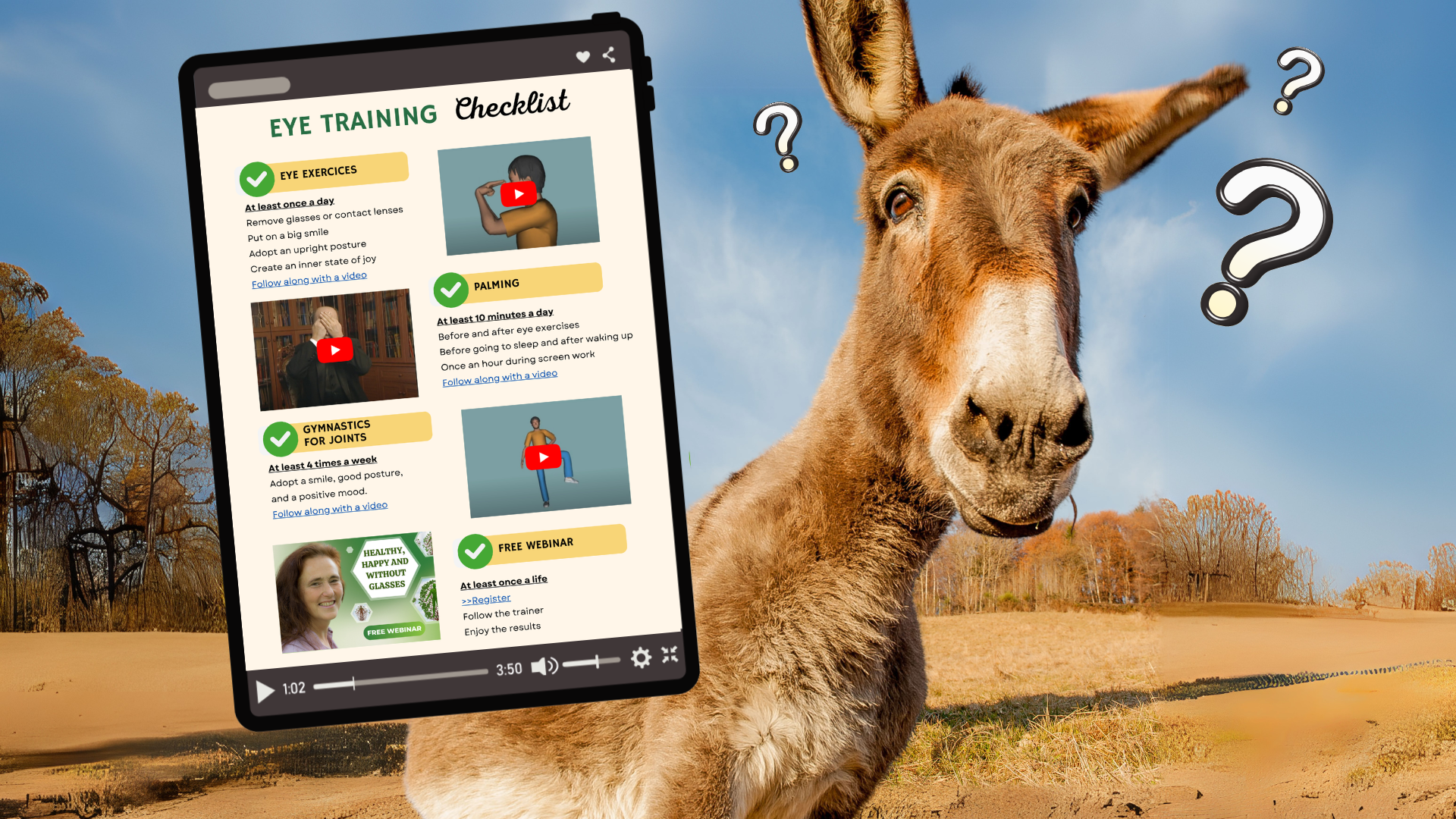- Know
- Love
- Create
Eyeglass fitting in eye training

An essential element of the Norbekov Method is the conscious approach to wearing glasses. They are not meant to be a permanent companion, but rather a temporary aid on the path toward natural vision.
“If you continue to rely on your old glasses, don’t dream of success!”
(from the book The experience of a fool by M. Norbekov)
The training program includes targeted exercises designed to strengthen the eye muscles and improve focus:
-
Eye gymnastics to enhance flexibility and mobility
-
Work with the eye chart to sharpen vision and check the actual state of the eyes
-
Relaxation techniques (palming) to release tension from the eye muscles
Important principle: All exercises are performed without glasses.
Rules for Adjusting Glasses
-
Spend as much time as possible without glasses
The more often you challenge your eyes without lenses, the more you stimulate their natural regeneration. -
Use weaker glasses
Choose glasses that are 1.0 to 1.5 diopters weaker than your current prescription. They should not contain a cylinder correction and can be purchased inexpensively in drugstores or online (e.g., on eBay). -
Reduce strength step by step
As soon as your current weaker glasses feel too strong, switch to an even weaker pair (again by 1.0–1.5 diopters) — until eventually you no longer need them at all. -
Avoid glasses with mild nearsightedness
If your refractive error is no greater than –1.5 to –2.0 diopters and you can cope without glasses in daily life, wear them only when truly necessary, such as while driving. -
No special lenses for astigmatism
During training, it is advisable to avoid specific corrections for astigmatism, allowing the eyes to regain greater flexibility.
Glasses Adjustment for Unequal Vision (Anisometropia)
If your eyes have different prescriptions, keep in mind the following:
-
Small difference (up to approx. 0.75 diopters): Both lenses can be reduced evenly (by 0.5–1.0 diopters each).
-
Large difference (from 1.0 diopter or more): Each lens should be adjusted individually to avoid overstrain.
Practical tip: You can purchase two weaker pairs of glasses and exchange the lenses, creating a customized pair perfectly adapted to each eye.
Example:
-
Left eye: –3.5 diopters → new glasses: –2.5 to –3.0 diopters
-
Right eye: –5.0 diopters → new glasses: –3.5 to –4.0 diopters
This careful adjustment helps maintain balance between the eyes.
A quote from M. Norbekov's The experience of a fool provided more clarity on this topic:
“Dear reader, how do you feel without glasses? Like walking down the street without pants? Is it possible that you simply cannot manage without them? Don’t be ashamed. You’re not alone.
Once, during a seminar, I asked this very question. A few participants raised their hands, and one lady replied: ‘I even see myself in my dreams wearing glasses.’
What’s the solution? There is a way out. Today or tomorrow, look for decorative glasses without lenses — for example, sunglasses, but only with light-green lenses. Or replace the lenses in your glasses with plain glass.
Have you noticed how difficult it is for children to part with toy glasses? When something is missing from your nose, it feels uncomfortable.
That means you put on a dummy, a sham pair of glasses, just to feel normal. There are junkies, there are alcoholics, and there are ‘glassaholics’ (my own invention!).
Today, start wearing glasses with fewer diopters — weaker ones. In two, three, or four days, those glasses will already feel natural. At that point, you must replace them with an even weaker pair.
After three or four more days, you’ll reach the point where you see normally with these as well. Then you can put on a dummy pair, simply to overcome the physical discomfort more easily. Clear enough?”
The combination of regular training, conscious adjustment of glasses, and a positive inner attitude makes it possible to gradually improve vision. With patience and consistency, you can reduce your dependence on glasses step by step — and perhaps even leave them behind completely.
If you, too, want to see without glasses, you can order the recordings of our Level 1 Seminar “Healthy, Happy, and Without Glasses” in English (including eye training).
You might also be interested in:
The Spine and Vision: What Connection?
How to start leading a healthy lifestyle after 50 years?




